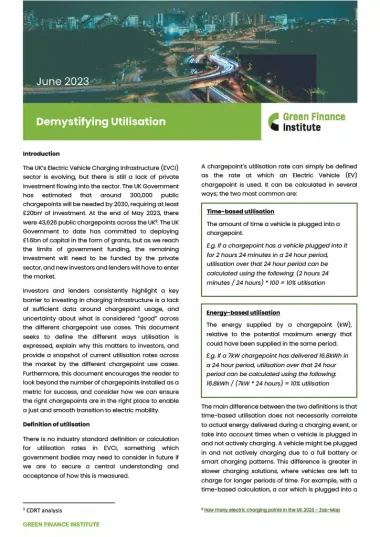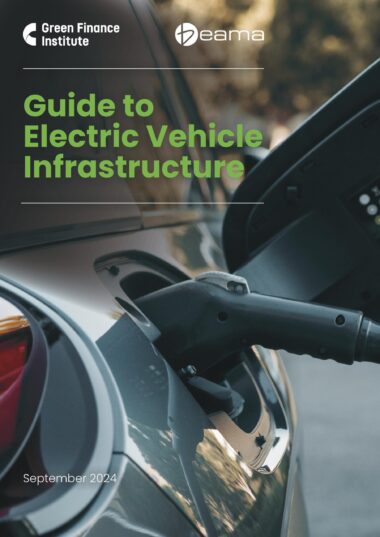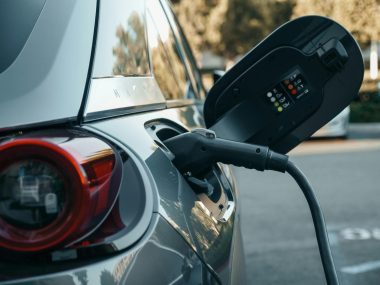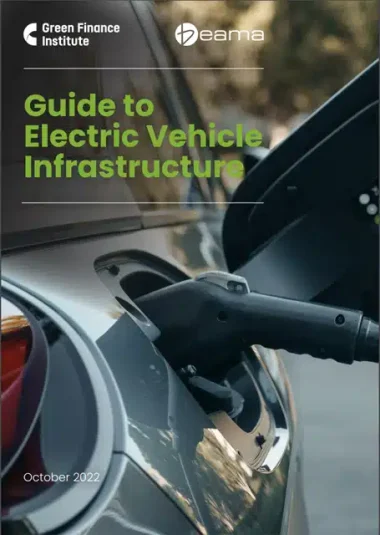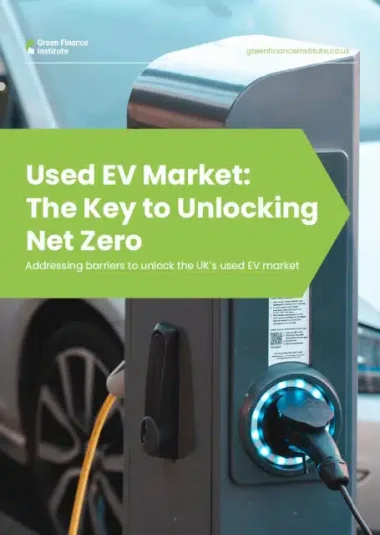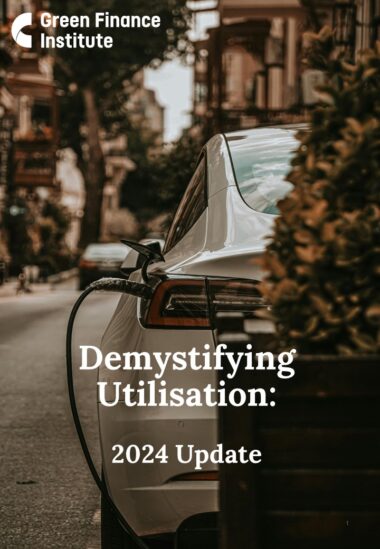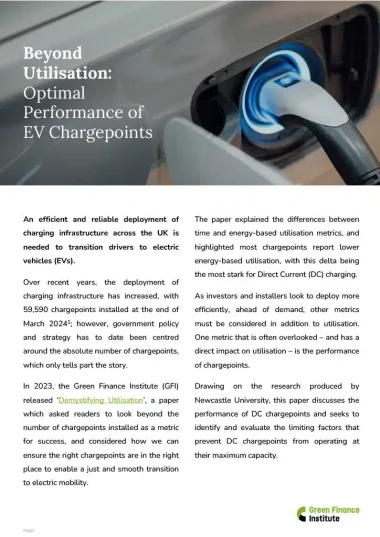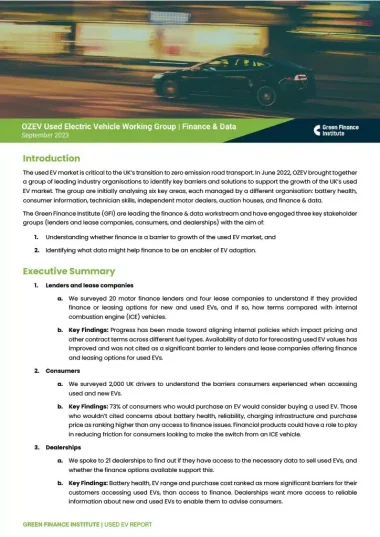Utilisation Linked Finance (ULF)
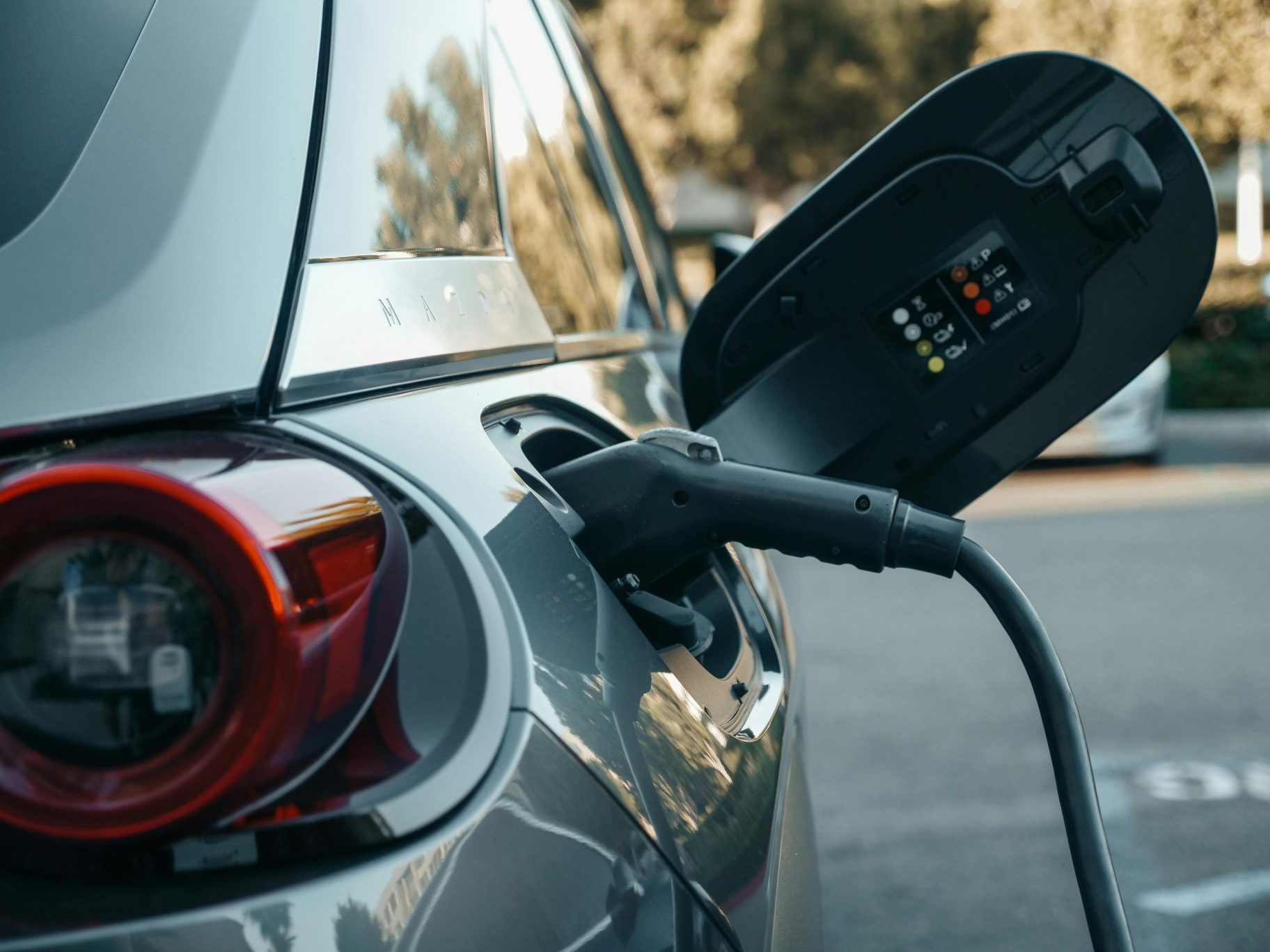
Electric car markets have experienced exponential growth in the transition to a net zero economy. The total of new electric car sales has increased from 5% of market share globally in 2020 to 14% in 2022, and this growth is expected to continue in the years ahead. If the potential market growth forecast for electric vehicles (EVs) continues on this trajectory, it is critical that the requisite charging infrastructure is in place to match and pre-empt demand. In this process, the right chargers must be installed in the right places across both urban and rural areas.
Market failure
As countries around the world accelerate the transition to EVs, the fact that charging infrastructure won’t be installed unless there are EV drivers to use it remains a challenge; and drivers won’t switch to an EV unless they are confident there are chargepoints they can use. In addition, investors and installers have identified uncertainty of short to medium-term utilisation rates, driven by a lack of data, as being a barrier to installation in areas where traffic flows are less predictable.
Traditional financing structures have often resulted in installations of chargepoints in areas of high EV density, where demand already exists. This is driving a disparity in the speed of installation, leading to gaps in infrastructure especially in rural and seasonal areas. To increase EV adoption, we need to build infrastructure just ahead of demand, in places where it is not yet commercially attractive due to limited EV drivers, but where it is required to give consumers the confidence to switch. This will significantly accelerate a just transition to electrified transport.

Utilisation Linked Finance (ULF)
Utilisation Linked Finance (ULF) is an innovative financial solution that can de-risk investment in charging infrastructure in these identified areas, either through a loan or asset finance. ULF can be structured so that payments are linked to the usage of the chargepoint – payment only commences once the chargepoints are revenue generating. As the payments scale with utilisation, installers will be given a greater level of comfort when deploying infrastructure, encouraging them to build now in areas where short-term demand is less certain.
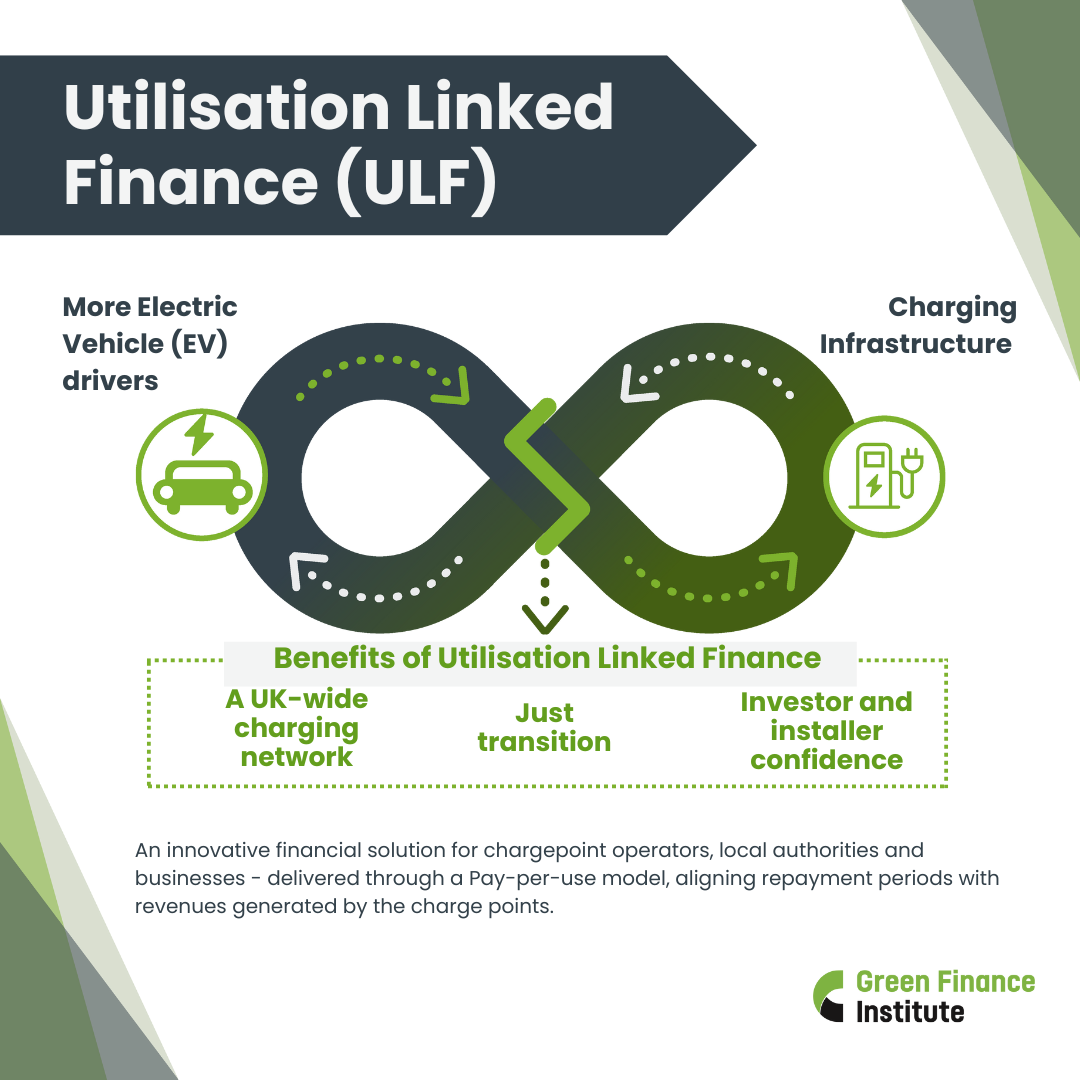
The benefits of ULF
- A UK-wide charging network: encourage deployment of charging infrastructure in areas where utilisation profile may be more uncertain, such as in rural and seasonal areas.
- Increase installer confidence: mitigate the concerns around short-medium term utilisation, by providing access to more flexible finance in areas where charging infrastructure has yet to be deployed but will be required as demand increases.
- Just transition: infrastructure exists where there have been early adopters of EVs, usually in higher socio-economic areas. ULF can help bridge the disparities in charging infrastructure across the country by making finance more accessible for organisations struggling with their capital costs, to deliver a just and equitable transition.
Related reports and guides
Demystifying Utilisation
Guide to Electric Vehicle Infrastructure – 2024 Update
Charging Infrastructure
Guide to Electric Vehicle Infrastructure
Used EV Market: The Key to Unlocking Net Zero
Demystifying Utilisation – 2024 Update
Beyond Utilisation: Optimal Performance of EV Chargepoints
OZEV Used Electric Vehicle Working Group | Finance & Data




